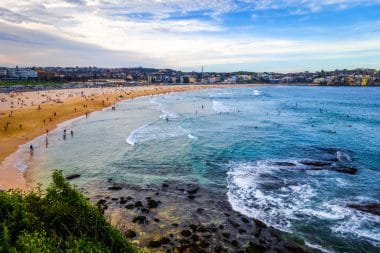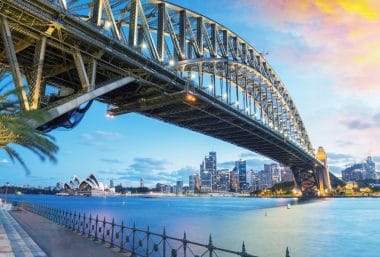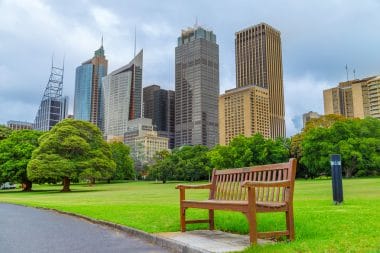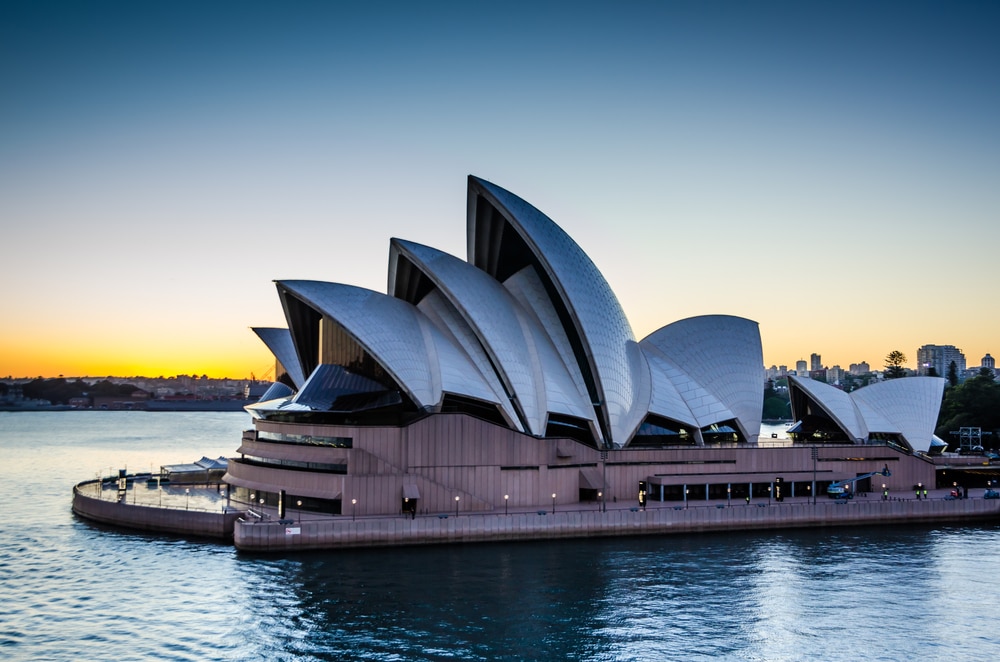Sydney is not the official capital of Australia, but it is the cultural, technological and industrial center of this continent. Founded in 1788, the city is home to only 5 million inhabitants, but the metropolitan region covers about 12,000 square kilometers (about five times the area of the Saarland).

Sydney itself only offers an urban big city feeling in the so-called Central Business District (CBD) and the surrounding districts. All important companies, banks, insurance companies and shops as well as cultural institutions such as museums, galleries, theaters, etc. are represented there, high-rise buildings are lined up next to high-rise buildings.
Just a few kilometres away from this centre, the rest of the city stretches out like a succession of different suburbs, all of which have centres, shopping streets or even commercial areas of their own.
What is the minimum stay in Sydney?
Of course, this depends decisively on what you want to see, because Sydney is a city with many faces. A good compromise is likely to be a six- to seven-day stay. This time should be enough to visit enough sights, museums, galleries and excursion destinations.
When to travel to Sydney?

The climate of Sydney is quite Mediterranean. However, this city is located in the southern hemisphere of the world, which means that summer begins there on December 1st. And summers can be very hot and dry in Sydney. The summer holidays of the pupils usually fall in the whole of January. Autumn (March, April, May), on the other hand, is often rainy. In winter, temperatures drop, but 20 degrees Celsius at lunchtime is not uncommon. There is little precipitation. The most pleasant time to travel is probably spring (September, October, November). Only a little rain from time to time and the temperatures climb to bearable to warm degrees, so that even swimming in the ocean without a wetsuit is possible.
What are the attractions in Sydney?

Anyone who has visited Sydney but hasn’t seen the Opera House and the Harbour Bridge has probably been to Sydney, Nova Scotia, Canada. These two landmarks are the tourist magnets of the metropolis, which is probably also due to the fact that you simply can’t avoid them. The Harbour Bridge, opened in 1932, connects the north of the city with the southern half and the opera house is directly opposite it at one of the main transport points for Sydney’s ferry shipping, Circular Quay.
It’s also home to the Royal Botanic Gardens, a parkland that sits right on the bay and offers spectacular views. Also within walking distance of these hotspots is Sydney’s oldest neighborhood, The Rocks. Here you will find museums (especially the famous Museum of Contemporary Art) as well as theatres, pubs, cafes and shops. Just a stone’s throw from The Rocks, the hip district of Barangaroo has been built from the ground up in recent years from a dreary harbour area. Bars and restaurants in particular invite you to linger here.
In the immediate vicinity of the city centre there is the Powerhouse Museum, a Sea Life Aquarium, the Chinese Garden of Friendship, the Australian Museum and the Art Gallery of New South Wales.
In the northern part of the city, right at the foot of the Harbour Bridge next to the swimming pool with the most breathtaking views, the North Sydney Olympic Pool is a nostalgic amusement park called Luna Park. A few kilometres to the east, Taronga Zoo opens its doors.
There are many other places in Sydney that are worth a visit, be it the Olympic Park in the west or the many theaters, variety shows, galleries, museums, etc. But what makes this metropolis so appealing is its incomparable location and nature.
Nature? In a big city?

Even if it doesn’t seem to fit together very well, Sydney is a very green city. On the one hand, this is due to the fact that quite a few parks have remained in the city area. Australians also like to play golf, which is why huge golf courses are also not uncommon. In addition, Sydney is surrounded by Ku-Ring-Gai Chase National Park to the north, the Blue Mountains to the west, the Royal National Park to the south, and the Pacific Ocean to the east.
In addition, Sydney offers countless beaches and crystal clear sea water. Probably the most famous beaches are Manly and Bondi Beach. But Bronte Beach and Tamarama Beach, for example, in the immediate vicinity of Bondi, are in no way inferior to them. Natural and artificial rock pools can be found everywhere, the spectacular Coast Walk from Bondi to Coogee Beach offers wonderful views of the sea on the cliffs to the Pacific. In general, the Coast Walks in Sydney are more worthwhile than a standard tourist program in the city.
From Manly, trails lead along the coast to North Head, a peninsula that is still almost completely covered with forest and offers beaches with Collins Flat Beach and Store Beach that can only be reached on foot or by boat.
At the huge bay, which divides Sydney into the north and south halves, there are other coast walks that lead from beach to beach, with ferry docks often on the way and thus promise shortcuts.
In general, a trip on one of the many ferry connections is immensely worthwhile. A little insider tip is the ferry F3 from Parramatta Wharf in the west of Sydney to Circular Quay. For more than an hour, it first travels along the Parramatta River to Sydney’s large bay, docking at various hotspots such as Cockatoo Island, which are definitely worth exploring.
Sydney – The highlights of the port city
- Location and importance: Sydney is the largest city in Australia and the capital of the state of New South Wales. It is located on the east coast of Australia on the Pacific Ocean and is one of the most famous metropolises in the world.
- Landmarks:
- Sydney Opera House: This iconic building with its sail-shaped roofs is a UNESCO World Heritage Site and an architectural masterpiece.
- Sydney Harbour Bridge: Known as the “Coathanger”, it offers breathtaking views of the harbour. Guided bridge climbing tours are particularly popular.
- Bondi Beach: A legendary beach known for surfing, sunbathing and its relaxed atmosphere.
- Culture and lifestyle:
- Sydney combines modern city life with a distinct outdoor culture. Numerous festivals, museums and a vibrant nightlife characterize the cityscape.
- Markets like Paddy’s Market and neighborhoods like The Rocks offer insights into local art, history, and culinary specialties.
- Nature and surroundings:
- The Royal Botanic Garden is a green oasis right on the harbour.
- The Blue Mountains National Park is just an hour’s drive away and offers spectacular hiking trails and waterfalls.
- Climate: Sydney enjoys a temperate, maritime climate with warm summers and mild winters. Perfect for visiting at any time of the year.
- Transport and Arrival:
- Kingsford Smith International Airport is the city’s main airport, with connections all over the world.
- Within the city, a well-developed network of ferries, buses and trains ensures easy mobility.
- Special experiences:
- A sunset harbor cruise.
- A trip to the nearby Manly Beaches by ferry.
- Dinner in one of the many first-class restaurants with a view of the Opera House.


